Empire State Building – New York City’s Iconic Landmark
The Empire State Building is one of the most famous buildings in the world, and there’s a lot to talk about when it comes to the history of this building. In this article, we will examine the history, architecture, and height of this incredibly famous New York City landmark to see what has made it such an icon of the city. Keep reading to learn more about the Empire State Building!
A Look at the Empire State Building
| Architect | Shreve, Lamb and Harmon Associates |
| Date Constructed | 1930 – 1931 |
| Function | Office and observation tower |
| Materials Used | Steel, limestone, and granite |
| Height | 443.2 meters (1,454 ft) |
| Location | New York City, New York, United States |
The Empire State Building is, by far, one of the most famous buildings of all time, and certainly one of the most famous buildings of the 20th century. The immense fame of the structure is not necessarily down to the architectural feats of the construction itself, although the building is an utterly gorgeous Art Deco skyscraper, but rather because of its place within American popular culture. The cultural impact of this structure has been immense, but we’ll discuss that soon enough. First, let’s have a look at the Empire State Building’s history.
The Empire State Building’s History
So, just when was the Empire State Building built? Well, the planning for the structure started the year of the Great Crash of 1929. The idea came from John Jakob Raskob, who was the founder of General Motors, and he wanted to do something special: topple the Chrysler Building as the world’s tallest building. He, along with several others, joined together to develop this structure.
They quickly hired Shreve, Lamb and Harmon Associates to design the structure, and the Empire State Building’s history had officially begun.
It is rather funny that you could answer the following question quite easily: why was the Empire State Building built in the first place? The reason that is given is because they wanted to surpass the Chrysler Building, but you could also state that it was essentially out of a sense of spite seeing as the Chrysler Building was, similarly, designed at the behest of the owner of a major car manufacturer.
The general idea for the design was built around the inspiration that William Lamb took from a pencil and decided to design a structure that would be relatively simple in its overall design while also including a large, pointed spire. The basic premise of this building was that it would need to be able to accommodate many different tenants with different needs, and this led to the use of an open floor plan within the structure that could then be divided and arranged as needed.

The Empire State Building’s construction started with the demolition of an existing building. This building was the famous Waldorf-Astoria Hotel that was there already. One of the most interesting things about the beginning of the creation of the steel frame of the building, which started in 1930, was that it made use of an assembly line method to erect it as quickly as possible. As one of the founders of the building was the man who owned General Motors, it perhaps makes some sense that an assembly line approach would be used, and this method allowed the construction team to create four and a half stories of steel frame every single week.
The Empire State Building’s construction officially came to an end in 1931, which meant that construction of this immensely tall skyscraper took just over a year to complete. This is an absolute marvel of 20th-century engineering.
This new building was also declared the tallest in the world upon its completion, and the opening was attended, in some way, by some major figures. For instance, the button that turned on the lights was wired to Washington, D.C. so that Herbert Hoover, the President of the United States at the time, could turn the lights on for the very first time. As soon as the Empire State Building’s construction was over, it attracted many visitors who wanted to use the observation decks to gaze out over the city, and there was an immediate outpouring of pop cultural love and adoration for the structure. This may have been aided by the Art Deco design that the structure exemplified, but the Empire State Building’s height likely played a far larger role.
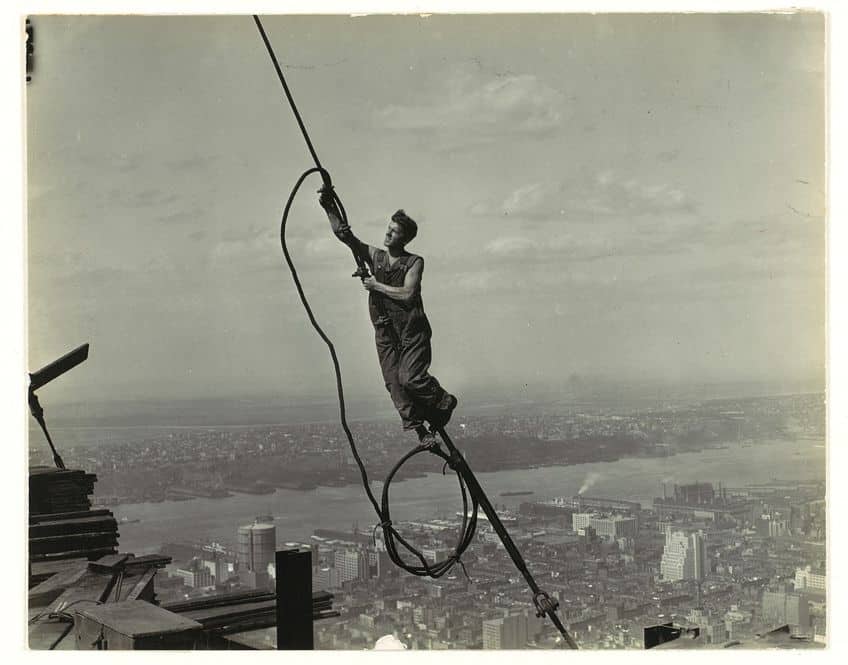
The Empire State Building may have been a beloved icon as soon as it was completed, but that didn’t mean that the building was an immediate financial success. The problem was that construction started the year of the Great Crash, the event that led to the Great Depression. This meant that the Empire State Building struggled to attract tenants in those early days, and during this period, the building only achieved 25% occupancy. It was not a good or pleasant situation for those in charge of the construction to have to face. The building was not a success, and thanks to the illustrious nature of some of the materials that were used in the Empire State Building’s construction, the building was seen as overly decadent.
This didn’t stop the Empire State Building’s pop cultural influence though. The building would quickly become an icon of New York City and Hollywood. The reason for the Hollywood connection, despite Los Angeles being on the other side of the country, the Empire State Building is probably best known for being the structure that King Kong scaled in his movie. The Empire State Building had become a movie star, which is one of the best-known Empire State Building facts.
The Great Depression eventually waned, and as a result, the Empire State Building’s prospects started to soar. By the early 1940s, the building was nearly completely occupied, but it would take until the 1950s for the structure to break even. Things further improved for the building when a radio antenna was affixed to the top of the building and allowed it to be used to host television stations in its walls.
The building would continue to be used as an office building and observation tower for decades, and while it was eventually replaced as the tallest building in the world, it continued to attract fame and love. However, the Empire State Building did become the tallest building in New York City for a while again, but the reason for that was because of a tragedy. When the 9/11 terror attacks occurred, the World Trade Center was destroyed, and this left the Empire State Building to be the tallest in the city again. It was also used for radio and television transmissions after this event for the first time in many years.
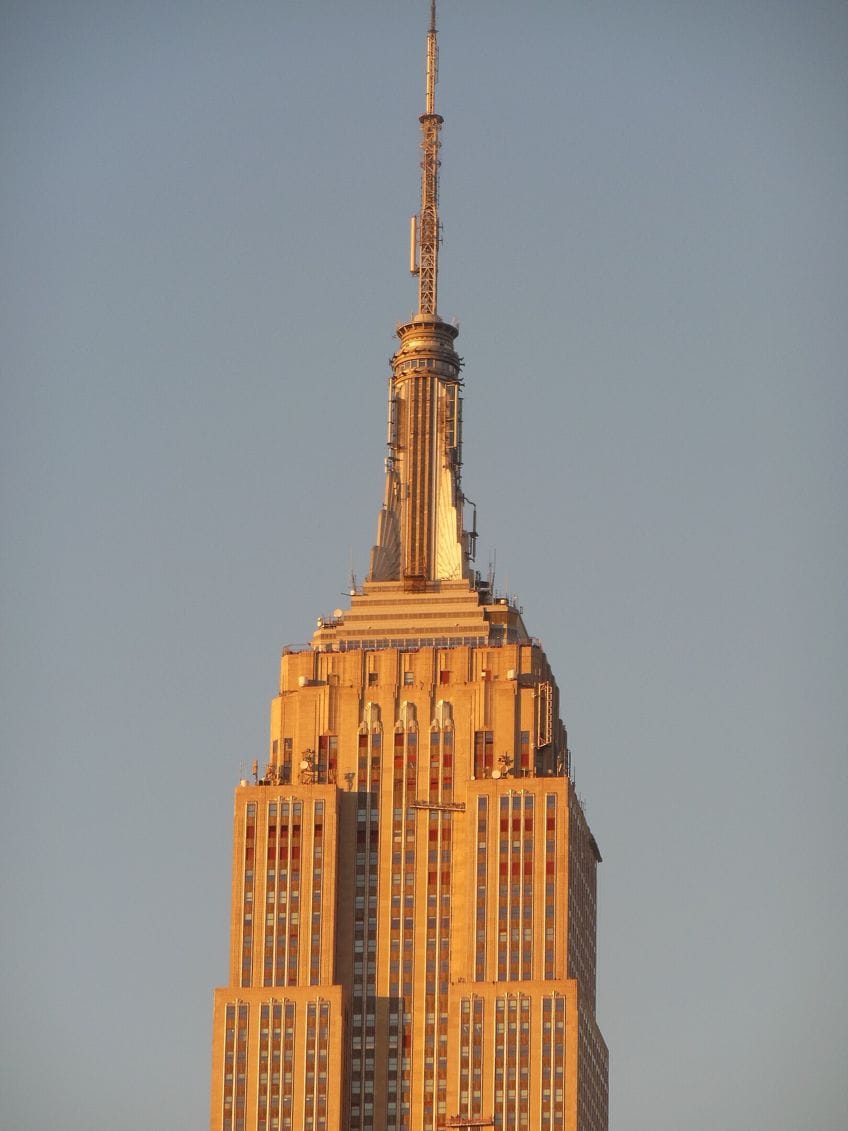
So, now that the building is beyond its heyday, who owns the Empire State Building? The question is rather confusing as it is technically owned by the Empire State Realty Trust, which is a consortium of various interests that own a stake in the building.
However, it is still rented out by many tenants who do not have an ownership stake, and so the building can be seen as theirs in a more practical sense.
The Empire State Building is no longer the tallest in the city or the world at the time of writing, but it does remain an icon and symbol of New York City. The design is so recognizable that the silhouette alone is enough for many to recognize it. Let’s have a look at the exterior architecture of the Empire State Building to see why it has become such a recognizable symbol of the city.
The Empire State Building’s Exterior Architecture
The Empire State Building was designed by Shreve, Lamb and Harmon Architects, and this firm designed the building in the Art Deco style. They did so because Art Deco architecture was particularly in vogue during this period of time. Art Deco architecture is essentially an attempt to make use of machine-age forms and designs, and many common Art Deco motifs can be found on and in the Empire State Building’s architecture. This building, alongside the Chrysler Building, has become the go-to example of Art Deco architecture.
The general construction of the building itself is symmetrical in design, and it rises in sections separated by setbacks. There are setbacks located on various floors, specifically the 21st, 25th, 30th, 72nd, 81st, and 85th floors, and this was done because it was specifically required by the city government thanks to the Zoning Resolution of 1916 that aimed to ensure sunlight could still reach the streets.
This meant that buildings needed to use setbacks when they were beyond a certain height, and as the Empire State Building was the tallest building in the world when it was completed, these setbacks would definitely be necessary. However, the setbacks worked to the Art Deco advantage of the structure and have become integral parts of the construction as a whole. The setbacks allow the tower to narrow as it approaches the spire, and as a result, the building has a remarkably distinctive appearance when compared to the vast majority of straight skyscrapers that have a pure glass façade that rises with no setbacks.

The façade is constructed out of limestone panels that give the building its distinctive appearance, and the building as a whole is constructed out of numerous materials, such as limestone, granite, brick, steel, and aluminum. Additionally, there are 6,514 windows throughout the building that complement the general design. These are situated between the many geometric shapes that are used as decorative elements throughout the façade of the Empire State Building.
In addition to the façade, the main entrance uses doors that are flanked by statues of eagles, and the entrance itself is topped with a massive window decorated in similar geometric shapes to those that adorned the façade.
These are common features when designing structures in the Art Deco style, as Art Deco architecture is typically seen as a combination of the talents of various artistic fields collaborating to produce a specific kind of design that was meant to be both decadent in its general application and industrial in its execution. The setbacks provide the Empire State Building with a very specific appearance, but the massive spire attached to the top of the building has only added to that aesthetic beauty.
The reason for the spire at first was because it was meant to elevate people to the height at which airships could pick up passengers, but airships did not remain a common form of transport once airplanes became larger and could accommodate travel at far faster speeds than anything an airship could ever accomplish. The top of the spire is now only open to certain people at certain periods, and it is never open to the public. The spire does, however, serve as a fantastic means to top out the building and turn it into a unique image in the city’s skyline. It has remained a prominent part of the New York City skyline ever since it was constructed, and it continues to be so.
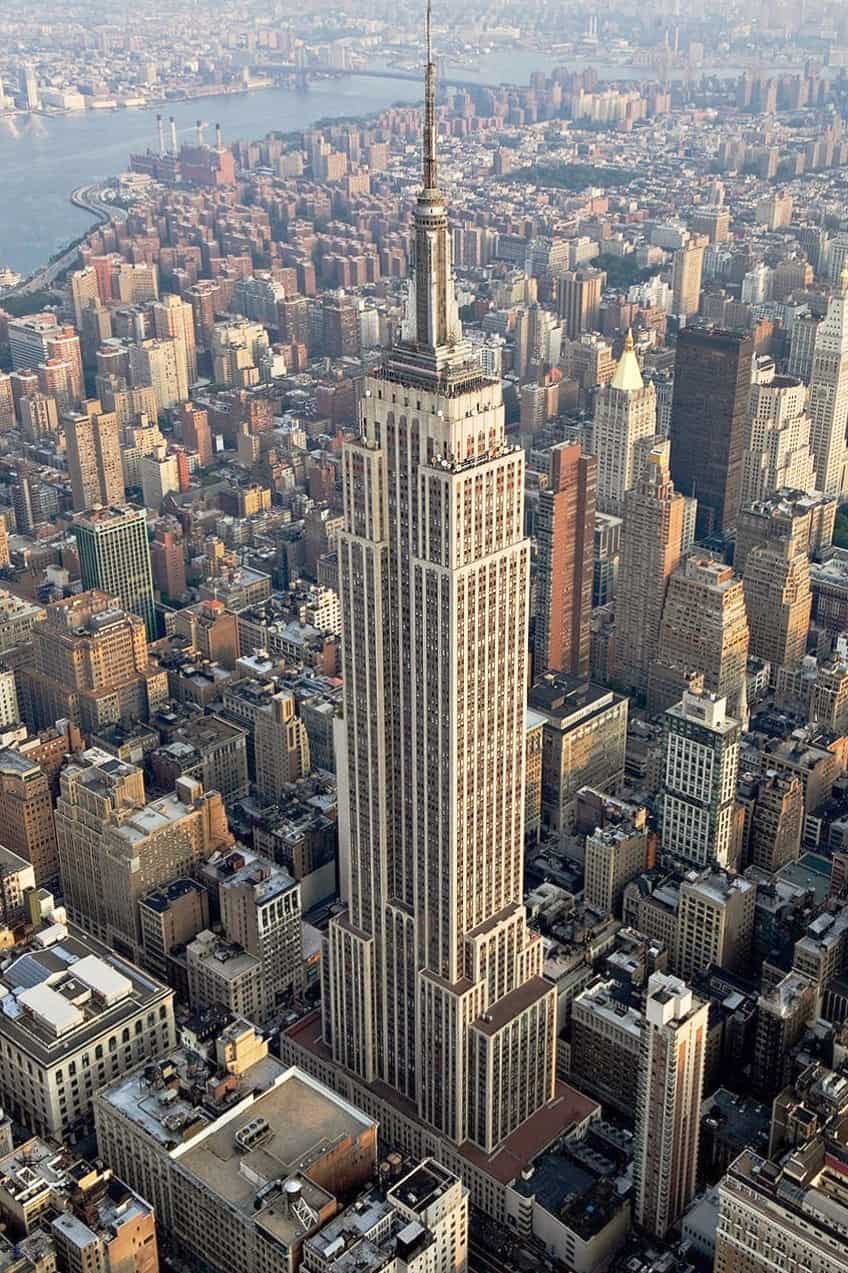
One of the more famous aspects of the early design was the use of searchlights at the top of the building. These were used for several events, such as commemorating the victory of Franklin D. Roosevelt over Herbert Hoover in the 1932 presidential election. These lights were later replaced with others that would allow the top of the building to be illuminated.
There have been changes over the years to the types of lights that have been put on display, but lights have almost always been used as a way to highlight the structure in the night-time sky.
The Empire State Building’s external architecture is one of the reasons it has become such an icon of the city, but it is also genuinely impressive that it was built as quickly as it was built. Just how long did it take to build the Empire State Building? It took just over a year. This immensely famous building was constructed in a fraction of the time that many similarly tall structures are built, even today. No wonder the Empire State Building was considered a marvel of engineering upon its completion.
The Empire State Building’s Interior Architecture
While the Empire State Building has remained one of the greatest icons of New York City thanks to its stunning exterior, the interior architecture of the building is also gorgeous. An exterior structure needs to be, in some sense, tough, and so some of the most detailed aspects of a building tend to be inside. This is why the interior of the Empire State Building is so beautiful in its Art Deco presentation.
The building is full of Art Deco-style artworks depicting the various industries that went into the design and construction of the Empire State Building, such as electrical and masonry work, and there are numerous instances of expensive materials being used to create a certain image of illustrious wealth. Materials like marble are used to create this wealthy industrial image within the structure.
One of the most famous instances of this can be seen in the elevator design. The elevators are decorated with geometric shapes, the image of the Empire State Building itself, and sunburst motifs. These kinds of designs were common in Art Deco buildings, and as the Empire State Building is possibly the greatest expression of this style, these elements are used consistently throughout the interior design.
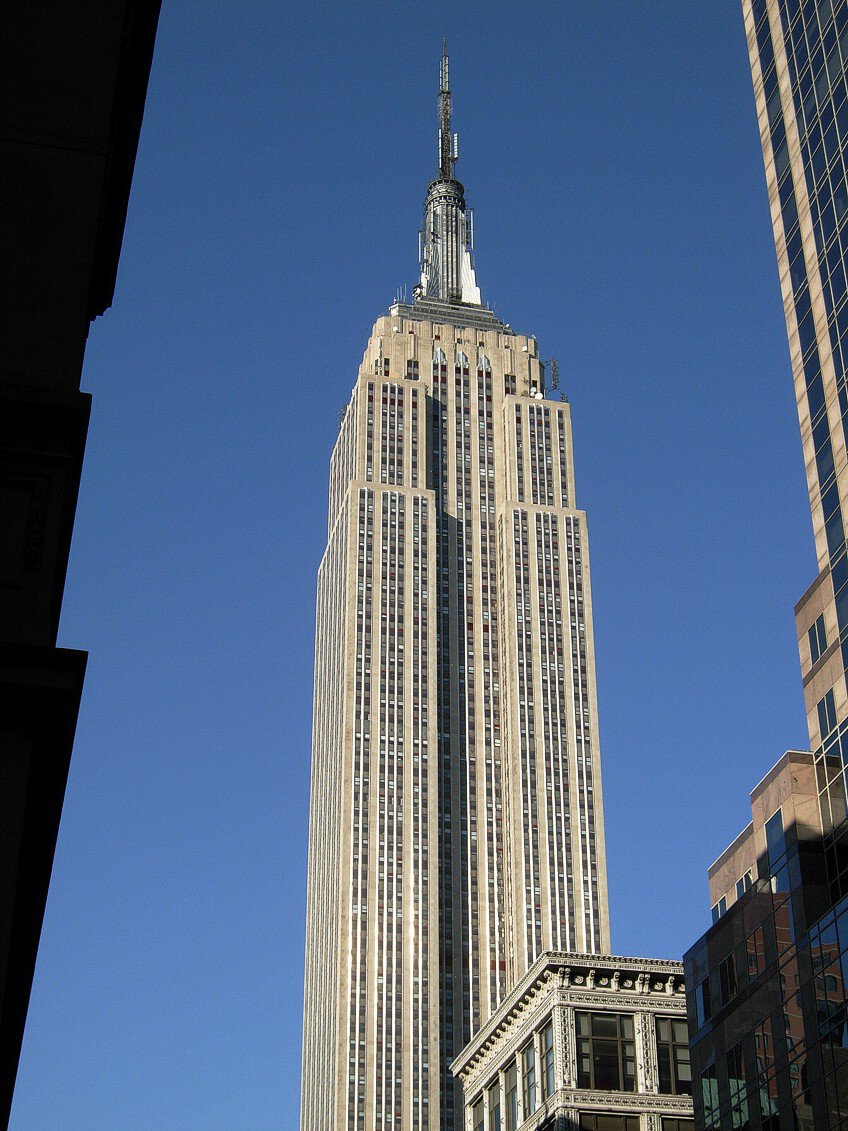
Additionally, murals are used throughout the lobby. These depict machine-age artworks, and while the original murals do not exist in their original form, there have been recreations to maintain the same general design and layout of the Empire State Building’s interior. One of the most famous of these designs was the use of an eight-panel artwork that depicted the Empire State Building as the Eighth Wonder of the World. Ultimately, the interior of the Empire State Building has remained one of the most notable instances of Art Deco architecture and collaborative artistic expression to have ever been constructed.
Some of the designs were rather arrogant, such as presenting itself as a Wonder of the World (a title generally ascribed by others on a building and not by the owners of the building themselves), but regardless of that arrogance, the Empire State Building has remained one of the greatest examples of this form.
Art Deco architecture fell out of favor during the Great Depression as it was perceived to be too decadent. However, there have been many revivals of it over the years, and it has inspired contemporary designers. So, while Art Deco may have lost some of its luster over the decades, the Empire State Building remains an icon. It has transcended the trappings of Art Deco’s rise and fall to become one of the most famous and stunning examples of skyscraper architecture to ever be designed. Additionally, the building is just incredibly tall.
The Empire State Building’s Height
The Empire State Building is an immensely tall structure at 443.2 m (or 1,454 ft) in height. The Empire State Building’s height is the thing that the building is best known for. When it was completed, it became the tallest building in the world but was eventually beaten out in 1970 by the World Trade Center.
The Empire State Building, in turn, was designed to surpass the Chrysler Building as the tallest in the world, and the Chrysler Building didn’t even get to retain its status as the tallest for all that long because it was surpassed 11 months after it was finished.
Otherwise, how many floors are in the Empire State Building? Well, while the height of the structure is what the building is known for, it does also have a large number of floors. There are technically 103 floors, but one of them is only available to special VIPs. The other 102 floors are open to the public.
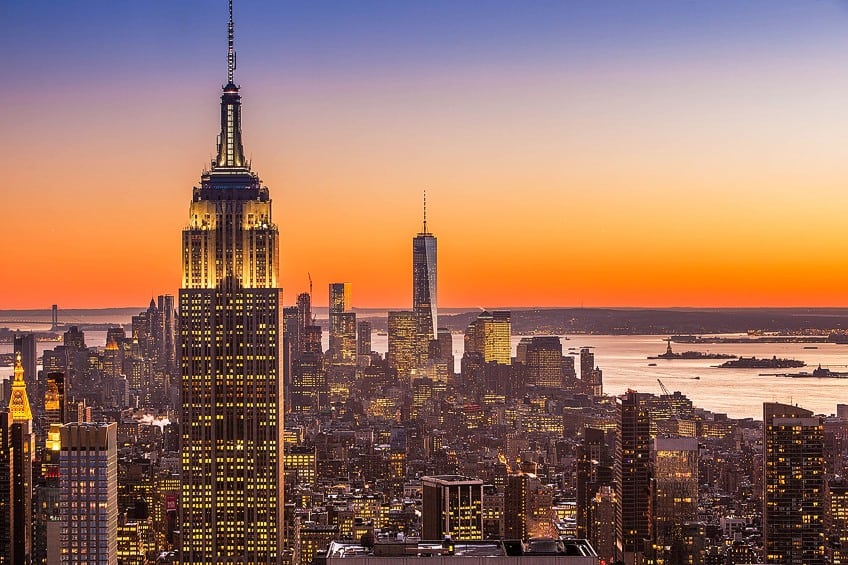
One of the primary reasons that the Empire State Building became such a popular tourist destination is also connected to that publicly available height. There are three observation decks. There are observation decks on the 80th, 86th, and 102nd floors. Each of these observatories allows guests to view the city from the sky and have become beloved in much the same sense as the building itself.
A Few Empire State Building Facts
The Empire State Building is a building with a long and complex history. That history has led to many events and interesting points over the years. So, let’s have a look at a few Empire State Building facts that are worth knowing.
- The Empire State Building didn’t turn a profit for about 20 years. The Empire State Building may have been beloved as soon as it was completed, but it didn’t attract tenants as the Great Depression was in full swing at the time.
- The Empire State Building’s height became emblematic of tall structures. In the same way that “Einstein” is now used to refer to smart people, “Empire State Building” became shorthand for immense height.
- The building was labeled one of the Seven Wonders of the Modern World. This particular award came from the American Society of Civil Engineers and is not a publicly decided status, but it is still a high praise.
- The building was considered the most beloved American building. This award came from the American Institute of Architects and their 2007 list of favorite architecture in the country.
- The building has become classified as a city and historic landmark. The decision came in 1980 when the New York City Landmark’s Preservation Commission and the second decision came in 1986 when the National Register of Historic Places named it a national landmark.
And that is a short list of some of the most interesting Empire State Building facts. Hopefully, at least a few of them have been interesting to know.
We have come to the end of our discussion about the Empire State Building. This structure is considered to be one of the most famous of the 20th century and a marvel of Art Deco architecture. In this article, we examined the history, architecture, and height of this immensely famous and historic landmark. Hopefully, you learned much about this structure, but there are many other Art Deco buildings out there that are worth learning about too!
Frequently Asked Questions
When Was the Empire State Building Built?
Construction on the Empire State Building started in 1930 and was done within a relatively quick period. The building was officially opened in 1931 and has remained an emblem of New York City ever since.
How Long Did It Take to Build the Empire State Building?
The construction of the Empire State Building took a little over a year. It started in March 1930 and was completed by May 1931. The reason for the speedy construction of the building is because it made use of an assembly line method to ensure that the construction of the building did not take as long as usual.
Why Was the Empire State Building Built?
The Empire State Building was designed and constructed because those who wanted it created wanted it to surpass the Chrysler Building as the tallest building in the world. The actual real-world purpose of the building was to be an office building, though.
How Many Floors Are in the Empire State Building?
The Empire State Building is made up of 103 floors, but one of those is not open to the general public. This makes it one of the tallest buildings in the city to this day, even though it has been replaced as the tallest building in the world.
Who Owns the Empire State Building?
The Empire State Building has changed hands on many occasions over the course of its existence. The present owners, as of 2013, are the Empire State Realty Trust. This group represents consolidated interests that hold a share of the building.
Justin van Huyssteen is a writer, academic, and educator from Cape Town, South Africa. He holds a master’s degree in Theory of Literature. His primary focus in this field is the analysis of artistic objects through a number of theoretical lenses. His predominant theoretical areas of interest include narratology and critical theory in general, with a particular focus on animal studies. Other than academia, he is a novelist, game reviewer, and freelance writer. Justin’s preferred architectural movements include the more modern and postmodern types of architecture, such as Bauhaus, Art Nouveau, Art Deco, Brutalist, and Futurist varieties like sustainable architecture. Justin is working for artfilemagazine as an author and content writer since 2022. He is responsible for all blog posts about architecture.
Learn more about Justin van Huyssteen and about us.
Cite this Article
Justin, van Huyssteen, “Empire State Building – New York City’s Iconic Landmark.” artfilemagazine – Your Online Art Source. October 18, 2023. URL: https://artfilemagazine.com/empire-state-building/
van Huyssteen, J. (2023, 18 October). Empire State Building – New York City’s Iconic Landmark. artfilemagazine – Your Online Art Source. https://artfilemagazine.com/empire-state-building/
van Huyssteen, Justin. “Empire State Building – New York City’s Iconic Landmark.” artfilemagazine – Your Online Art Source, October 18, 2023. https://artfilemagazine.com/empire-state-building/.



